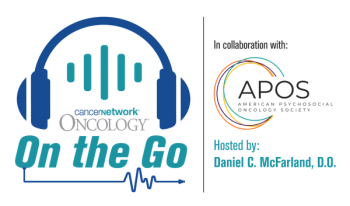
Proton Postmastectomy Radiotherapy ‘Should Be a Treatment Option’ for Breast Cancer, Says Expert
Robert Mutter, MD, of Mayo Clinic says that proton postmastectomy radiation therapy allows for excellent tissue sparing in the management of breast cancer.
Patients should have the option to receive proton postmastectomy radiotherapy for breast cancer when available, according to Robert Mutter, MD, an associate professor of the Department of Radiation Oncology at Mayo Clinic in Rochester, Minnesota.
During the
In the trial, there were no significant differences in terms of 3-year disease-free survival among patients receiving conventional (89.4%; 95% CI, 80.0%-99.8%) or hypofractionated radiotherapy (92.4%; 95% CI, 84.5%–100.0%; P = .91). Mutter also emphasized the importance of gathering additional data to confirm optimal dosing and fractionation.
Transcript:
One of the main takeaways is that this study provides even further evidence that proton therapy for breast cancer provides excellent normal tissue sparing consistent with prior reports. It also appears to provide similar complication rates and similar disease control; there was no difference in disease-free survival between the [conventional and hypofractionated] arms. Our results, again, suggest that proton therapy should be a treatment option for patients at centers that have the proton therapy available.
Our results also suggest that [for] patients being treated with postmastectomy proton therapy, the 3-week 15-fraction course may be a reasonable option provided that fractionation is a part of shared decision-making. We really encourage patients who are being treated with proton therapy who are part of a prospective study or prospective registry, so we can hopefully gain additional information on the optimal dose and fractionation with these efforts in the proton community.
Reference
Mutter R, Giri S, Fruth B, et al. Phase II randomized trial of conventional versus hypofractionated post-mastectomy proton radiotherapy. Presented at the 2022 San Antonio Breast Cancer Symposium; December 6-10, 2022; San Antonio, TX. Abstract GS4-05.
Newsletter
Stay up to date on recent advances in the multidisciplinary approach to cancer.


















































































